Google Maps Real-Time Location: 6 Best Apps That Use It

Ever wondered how people share their live location through Google Maps? It's actually pretty simple and very useful. The Google Maps real-time location feature makes it all possible.
![]()
This article will explore what Google Maps' real-time location feature is, when to use it, and 6 awesome tools (including one you absolutely need to know) that help you get started.
What Is Google Maps Real-Time Location?
The Google Maps real-time location feature lets you share your live position with someone for a selected time or until you manually turn it off. It updates automatically as you move, offering the exact coordinates in real time.
Unlike sending a static pin, this option allows the person you share it with to see your journey in motion. It works using a mix of GPS, your mobile data, and Google's own location services.
When Should You Use Google Maps' Real-Time Location Sharing Option?
![]()
Real-time location sharing is most helpful in specific situations, especially when safety or coordination is key. You might consider using it when:
- Meeting someone in a crowded or unfamiliar place
- Letting friends or family know your estimated time of arrival (ETA)
- Tracking children, elderly relatives, or vulnerable individuals
- Staying safe during emergencies or while traveling alone
- Coordinating group meetups or events in real time
As long as it's with someone you trust, Google Maps' share location in real time is a smart way to stay connected and safe.
How to Share Real-Time Location on Google Maps
Using Google Maps to share your location in real time is quick and straightforward.
- Open Google Maps on your phone.
- Tap your profile picture or initials in the top-right corner.
- Select Location Sharing.
- Tap "Share location" and choose how long to share it.
- Select the person from your contacts or generate a shareable link.
This is how to share real-time location on Google Maps in just a few taps.
Advantages:
- No extra apps needed
- Easy to set up and share
- Works across Android and iPhone
- Integrates with Gmail and contacts
- Share location for set durations
Disadvantages:
- Doesn't notify you when someone disables sharing
- No geofence or history features
- Must be manually turned on by the person being tracked
- No stealth mode (can be turned off easily)
- Limited parental controls
If you just want to share your ETA or location with a friend temporarily, it's great. But if you're a parent or need more control, it falls short.
6 Best Alternatives to Google Maps Real-Time Location Tracking
To make the most of real-time location sharing, several apps integrate directly with Google Maps to enhance tracking, coordination, and safety. Below are six popular apps that utilize Google Maps' real-time location feature for various purposes.
1. SafeMyKid: The Best App for Google Maps Real Time Location
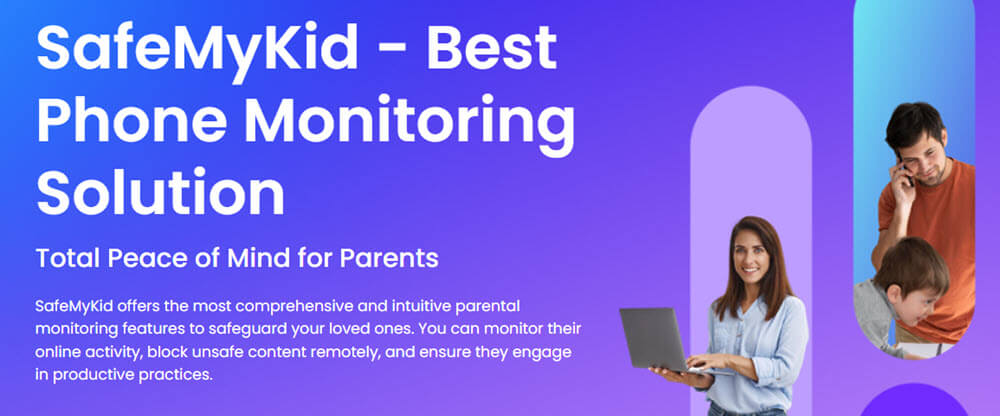
If you want the best and most advanced tool to monitor someone's location using Google Maps real-time location, then SafeMyKid is your go-to solution.
SafeMyKid offers real-time GPS tracking, location history, and smart alerts through seamless integration with Google Maps. Whether you're coordinating with loved ones or ensuring someone's safety, SafeMyKid provides a reliable and user-friendly solution.
Why SafeMyKid Is The Best Option to See Google Maps Real-Time Location
SafeMyKid uses Google Maps' live sharing capabilities, but goes beyond what regular apps offer. Designed for parents and guardians, it helps you track your child's movements discreetly, monitor app use, and receive instant alerts, all from one dashboard.
Key features include:
- Live Google Maps Integration: Instantly view someone's real-time location with high accuracy using Google Maps' interface.
- Geofencing Alerts: Set safe zones (like home, school, or office) and get instant alerts when the person enters or exits them.
- Location History Logs: Access detailed movement history to review where someone has been over the past days or weeks.
- Multi-Device Monitoring: Track multiple people from one dashboard——ideal for families, teams, or caregivers.
- Stealth Mode Tracking: Operates discreetly, so the tracked person isn't constantly notified, preserving battery and privacy.
- Custom Notifications: Get alerts for irregular behavior, like sudden detours, long stationary times, or battery drops.
Whether you're ensuring a child gets home safely, confirming an employee's location during work hours, or simply staying connected with a loved one, SafeMyKid makes real-time location sharing through Google Maps more secure, detailed, and user-friendly than ever.
How to Use SafeMyKid to See Google Maps Real-Time Location
Using SafeMyKid is simple, even if you're not tech-savvy. Whether you're tracking a loved one on an Android or an iPhone, the app seamlessly integrates with Google Maps to provide accurate real-time location updates. Here's how to get started on both platforms:
How to See Google Maps Real-Time Location on Android
Step 1.Sign up
Create your SafeMyKid account by visiting the official website and signing up.
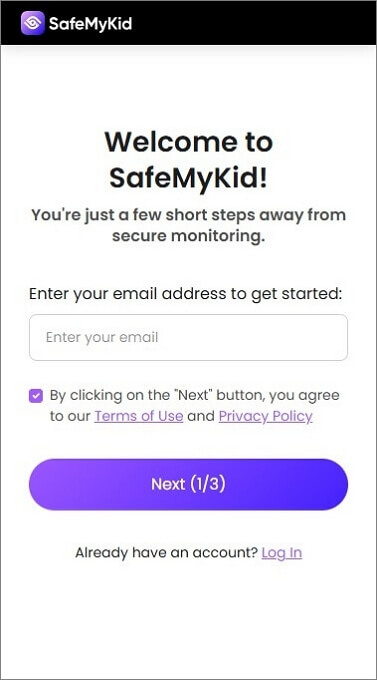
Step 2.Install The SafeMyKid App on The Target's Android Device
Follow the on-screen instructions to grant the necessary permission, including location access and background activity.
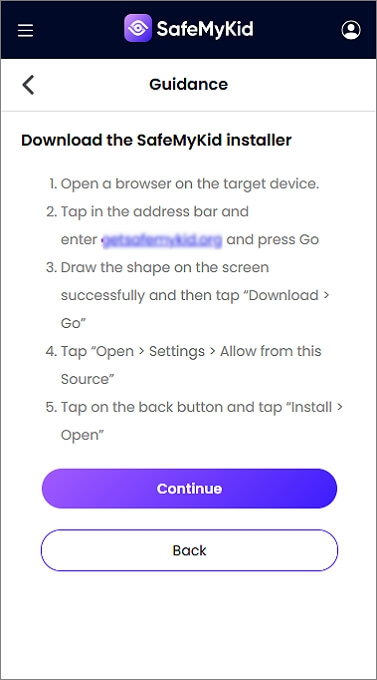
Step 3.View Google Maps Real-Time Location on Android
Log in to your dashboard from any device to see the live location of the Android user directly through Google Maps integration.
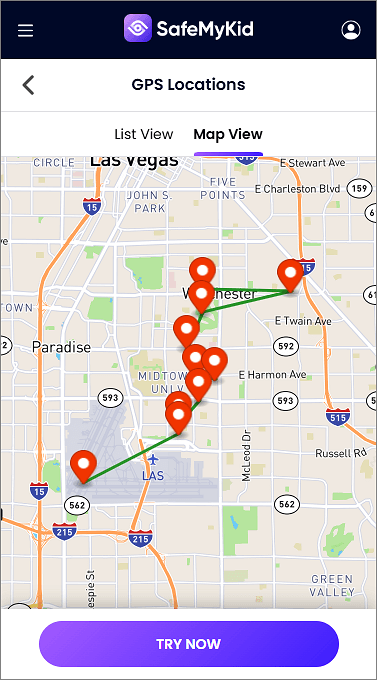
How to See Google Maps Real-Time Location on iPhone
Step 1.Create a SafeMyKid Account
Begin by signing up on the SafeMyKid website.

Step 2.Connect The Target iPhone via iCloud Credentials
Enter the iCloud login of the person's iPhone you want to track.
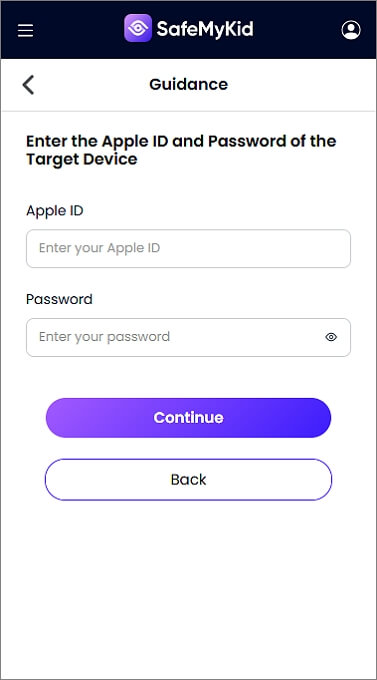
Step 3.View Google Maps Real-Time Location on iPhone
Once connected, you can track the live location from your dashboard using Google Maps features.

If you're serious about keeping your kids or loved ones safe and want a reliable, real-time solution, SafeMyKid is hands-down your best bet.
2. Find My Kids
![]()
Find My Kids is specifically designed for parental tracking, offering real-time GPS location, geofencing, and sound-based alerts (like sending a loud ring to the child's device).
It works with Google Maps for accurate tracking. Though powerful, the app must be installed on the child's phone and can feel bulky on devices with limited storage or battery.
Pros:
- Strong geofencing and alert features
- Accurate integration with Google Maps
Cons:
- Requires installation and setup on the target phone
- It may affect performance on low-end smartphones
3. GeoZilla
![]()
GeoZilla is a family safety app that provides real-time location tracking, activity history, and location-based alerts using Google Maps. It also includes a built-in chat and emergency alerts.
The app is user-friendly, but the free version is limited in terms of features and tracking depth, often requiring users to upgrade for full functionality.
Pros:
- Clean interface with Google Maps integration
- Includes features like location alerts and activity logs
Cons:
- The free version has limited features and frequent upgrade prompts
- Occasional syncing delays with older phones
4. WhatsApp
![]()
WhatsApp offers a basic and easy way to share real-time location using Google Maps within individual or group chats. Users can choose to share their live location for 15 minutes, 1 hour, or 8 hours.
It's integrated with Google Maps, so the shared location is accurate and visible within the chat. However, the feature is manual and temporary, with no background monitoring or parental tools. It's best suited for short-term location sharing with friends or family.
Pros:
- Very easy to use with no extra installation required
- End-to-end encrypted for secure sharing
Cons:
- No tracking history or monitoring dashboard
- Not ideal for parental control or continuous tracking
5. Facebook Messenger
![]()
Facebook Messenger allows users to share their live location for up to 60 minutes within a private message. The shared location is powered by Google Maps and provides a real-time tracking window, making it convenient for casual meetups or check-ins.
However, the limited duration and lack of automation make it unsuitable for ongoing safety tracking, and there are no alerts or history logs available.
Pros:
- Simple integration within Messenger, no extra apps needed
- Works across Android and iOS devices
Cons:
- Time-limited sharing with no extensions beyond 60 minutes
- Not meant for continuous or family-based tracking
6. Glympse
![]()
Glympse is a temporary location-sharing app that allows users to send real-time location links that automatically expire after a chosen time.
The recipient does not need to download the app; just click the link to view the location via Google Maps. It's great for short-term coordination but lacks long-term monitoring features or parental tools.
Pros:
- No sign-up needed for recipients
- Expiry settings offer privacy control
Cons:
- No tracking history or alerts
- Not ideal for ongoing safety monitoring
How to Stop Sharing Location on Google Maps
![]()
Whether you shared your location by mistake or no longer wish to, stopping it is quick and simple. Google Maps gives you full control over who sees your real-time location and for how long. To stop sharing:
- Open Google Maps.
- Tap your profile icon (top right).
- Select "Location Sharing".
- Choose the contact or link you shared with.
- Tap "Stop".
This immediately ends the live location feed, and the person will no longer be able to track you. It's a fast way to regain your privacy.
Troubleshooting: Google Maps Real Time Location Not Working
If Google Maps' real-time location feature isn't working properly, it can be frustrating, especially when you're relying on it for safety, coordination, or tracking someone's movements. Fortunately, most issues are easy to fix with a few basic steps:
- Enable Location Services: Go to your phone's settings and make sure GPS or location services are turned on.
- Update Google Maps: An outdated app version may cause glitches. Visit the Play Store or App Store and update to the latest version.
- Restart Your Phone: This helps reset the GPS and clear background bugs.
- Allow Background Location Access: Make sure Google Maps is allowed to access location data even when not in use.
- Disable Battery Saver Mode: Power-saving settings can interfere with location tracking accuracy and real-time updates.
If the issue persists, check if the person sharing their location has a stable internet connection and location permissions enabled. These simple fixes usually restore full functionality quickly.
FAQs on Google Maps Real Time Location
Before we wrap up, here are some frequently asked questions to help clarify anything you might still be wondering about Google Maps real-time location and how to use it effectively.
1. Can I share my real-time location on Google Maps with someone who doesn't have a Google account?
Yes, you can. When you choose to share your real-time location on Google Maps, you can generate a public link. This link can be sent via any messaging app, and the recipient can view your location in real time, even without a Google account, using any web browser.
2. Does Google Maps' real-time location work without internet access?
No, it does not work properly without an internet connection. The Google Maps real-time location feature relies on mobile data or Wi-Fi to continuously update your position. Without active internet, it may freeze or display an outdated location.
3. How accurate is Google Maps' real-time location tracking?
The accuracy depends on various factors like GPS signal strength, internet quality, and device settings. In ideal conditions, Google Maps can track your location within a 5-10 meter radius. For even higher precision, enabling "High Accuracy Mode" is recommended.
4. Is there a way to schedule location sharing on Google Maps in advance?
Currently, Google Maps does not support scheduled location sharing. You must manually activate the Google Maps share location real-time feature at the time you want to start sharing.
However, some third-party apps like SafeMyKid allow you to automate tracking behaviors through geofences or activity alerts.
5. Will the person I'm tracking be notified when I'm viewing their location?
With Google Maps, no alert is triggered when someone checks a shared location. However, the person can view who they're sharing with and stop access anytime.
In contrast, tools like SafeMyKid offer silent tracking features that do not notify the monitored person, especially on Android devices.
6. Can I use Google Maps' real-time location to track a lost phone?
Technically, yes, if location sharing was enabled before the phone was lost and the phone is still powered on with internet access. However, for dedicated lost-device tracking, Google's Find My Device (Android) or Apple's Find My iPhone is more appropriate.
7. Can someone misuse the Google Maps share location real-time feature?
Yes, if shared carelessly. That's why it's crucial to only share with trusted contacts and to set a sharing time limit. For secure monitoring, apps like SafeMyKid provide parent-controlled environments with privacy-focused settings and secure dashboards.
8. What's the battery impact of using Google Maps' real-time location?
Continuous location sharing uses GPS, mobile data, and sometimes background activity, so yes, it can drain the battery faster than normal. To reduce battery usage, turn off sharing when it's no longer needed or use power-efficient tools like SafeMyKid that optimize background tracking.
Conclusion
Whether you're keeping an eye on your kids, checking in with friends, or just trying to get home safely, Google Maps' real-time location is a helpful feature.
And while there are several apps out there, SafeMyKid stands out with its advanced tracking, easy setup, and reliable privacy features. It's everything you need to stay connected with peace of mind.

